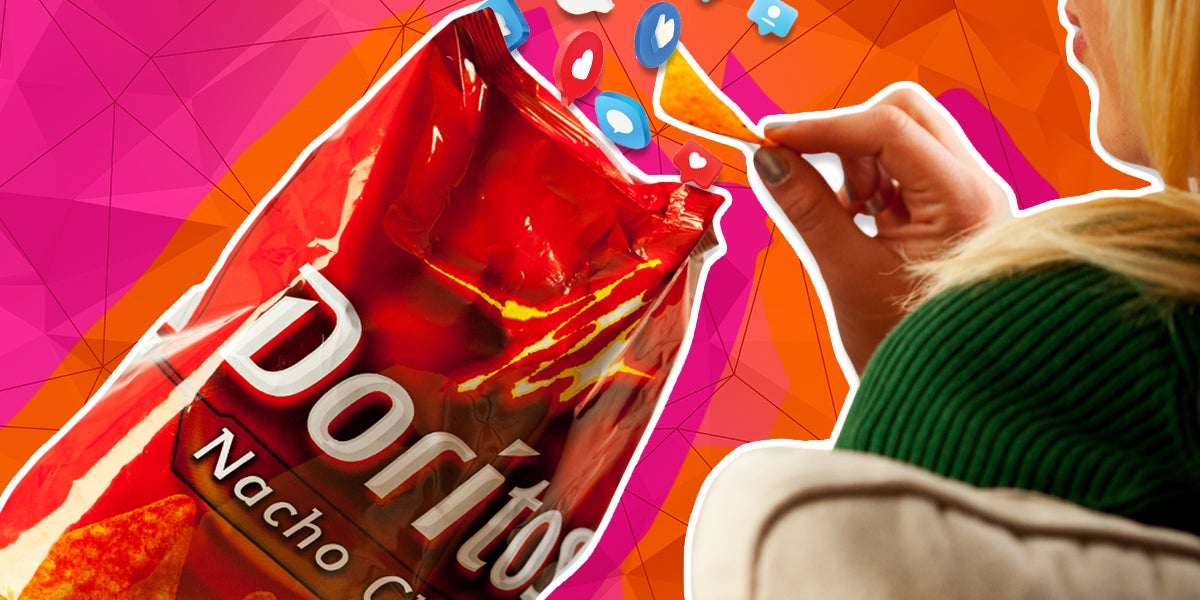
There’s nothing more sacred in this world than phone-in-bed time. We’ve grown accustomed to scrolling for a hit of that sweet, sweet dopamine — but why is social media so addictive? It’s a question that feels unanswerable, but a new theory suggests the answer might be a little cheesier than we thought.
“The idea is that only experiences that aren’t truly satisfying are maximally addictive,” says creator Celeste Aria in the now-viral TikTok clip which has amassed over a million views. “So imagine eating Doritos. When you eat a Dorito and finish your bite, you’re not fully satisfied.”
As usual, this theory had people taking it way too seriously: with some even dumping their partners over it. But for Celeste, at least, it’s the perfect allegory for our reliance on social media.
“It’s not the same as eating a steak or eating really satiating food that’s high in protein, where after you bite you really feel that fullness and that warmth of satisfaction.”
She added that “the peak of the experience is kind of when you’re first tasting it and not after,” noting how “the experience itself is not satisfying in the end.” So, when it comes to social media and user-generated content, the thing that draws you in is the initial, brief dopamine rush you get when you discover something new on your FYP.
If you think about it, that’s probably why the shorter-form video style of TikTok is more addictive than other types of social media: it captures our attention at the time, but it all feels like it’s over way too quickly. The Dorito is gone. So, we just keep scrolling and repeat.




